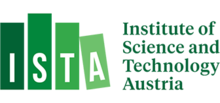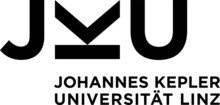Manfred Mark: DIPVOR – Preparation and Investigation of Vortices in a dipolar quantum gas
Manfred Mark:DIPVOR – Preparation and Investigation of Vortices in a dipolar quantum gas
The realization of the first Bose-Einstein condensates in 1995 followed by the preparation of a degenerate Fermi gas in 1999 with dilute gases of alkaline atoms opened the door to a new research area and realized a new paradigm of superfluid systems. In recent years the field expanded in terms of the atomic species used in experiments. Especially atoms with a large magnetic moment such as erbium and dysprosium provide the possibility to investigate phenomena arising from the long-range, anisotropic dipole-dipole interactions. One of most spectacular phenomenon shared by various superfluids are the so-called quantized vortices. Vortices are a direct consequence of the properties of a superfluid which is suspected to rotation. Quantum vortices only occur with a quantized flux, where the angular momentum per particle corresponds to an integer multiple of Planck’s constant. While vortices have been prepared and studied already in many superfluids including liquid helium or alkaline Bose-Einstein condensates, up to now dipolar vortices i.e. vortices in dipolar quantum gases were not observed.
Within the project “DIPVOR” we want to prepare and study for the first time vortices in superfluid dipolar quantum gases. The long-range anisotropic dipole-dipole interactions are expected to have dramatic effects on the formation and the properties of vortices, vortex-antivortex pairs and vortex lattice structures. Due to the rotonic excitation spectrum, which is present in both, helium superfluids and dipolar quantum gases, the density surrounding a vortex should exhibits density oscillations on a lengthscale connected to the roton excitation wavelength. For a dipole orientation perpendicular to the vortex core, the core itself as well as the superfluid phase pattern should develop an anisotropic shape, in close analogy to unconventional d-wave superconductors. In the case of multiple vortices in the system, their crystal-like arrangement should be influenced by the additional long-range interaction caused by the missing dipoles in the vortex core. Possible structures range from triangular and square lattices to rectangular geometries, which in the limit should form vortex stripes.
This project will be carried out in the operating quantum gas experiment at the Institute of Quantum optics and Quantum information at the Austrian Academy of Sciences in the group of Prof. Francesca Ferlaino. This experiment recently reached the milestone to produce the first degenerate double BEC of erbium and dysprosium. It also allows the production of Bose-Einstein condensates for all bosonic isotopes of both species, with the possibility to switch between isotopes within a few minutes.
Navigation
Contact
ESQ Office
Austrian Academy of Sciences (ÖAW)
Atena Zalbeik-Dormayer
Boltzmanngasse 5
1090 Vienna
office(at)esq-quantum.at






